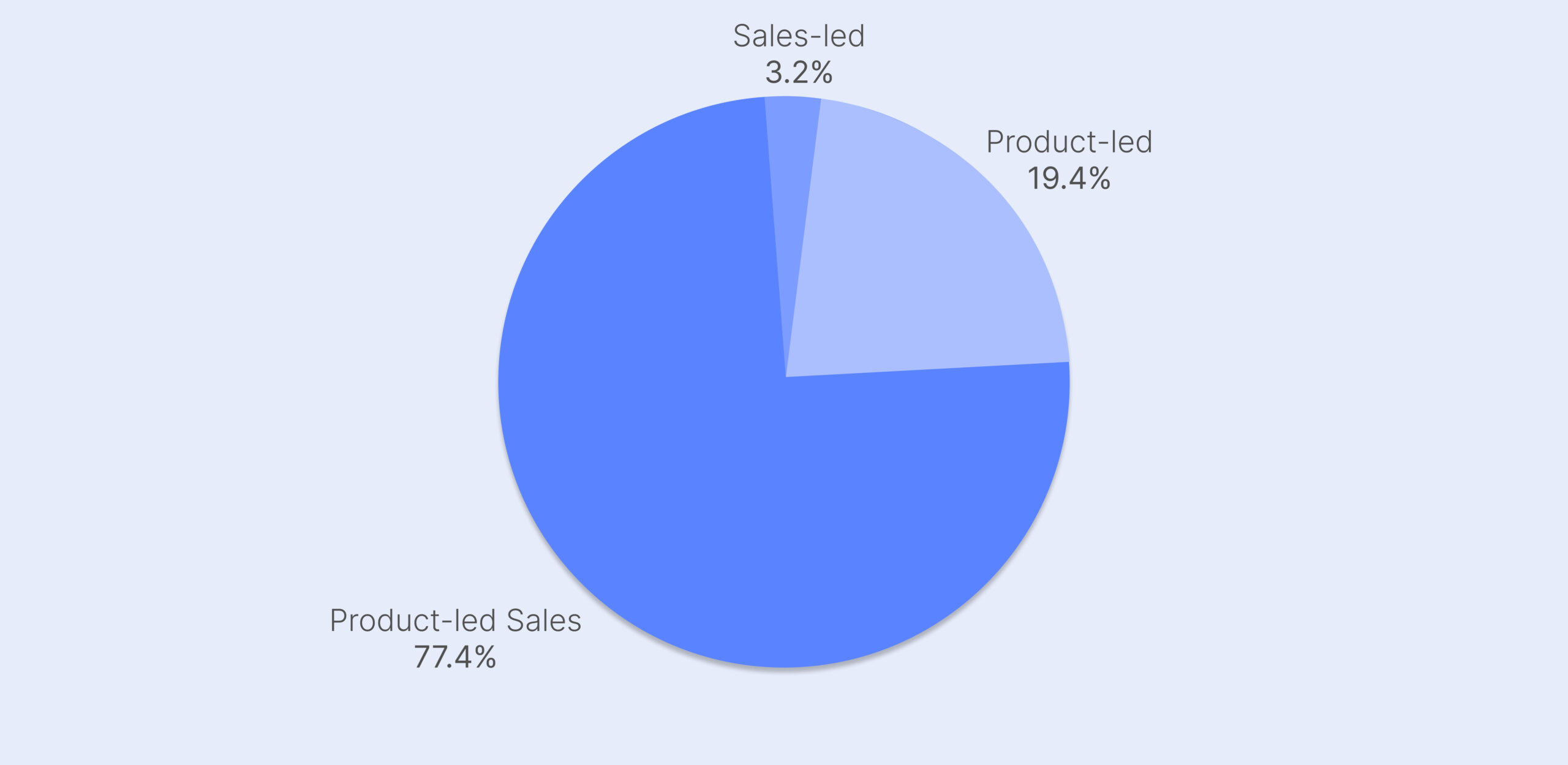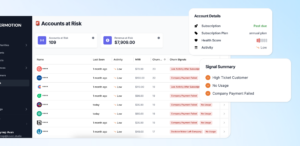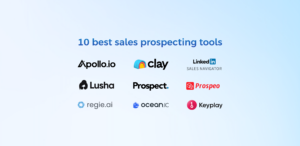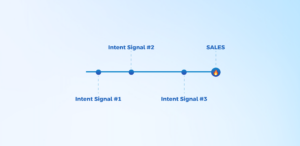There have always been sales-led and product-led… Nothing new; this is a well-known fact… However, it is almost impossible to rely blindly on one of these strategies, without knowing their strengths and weaknesses.
Cold emailing alone isn’t the answer, and neither is leaving self-service customers without help during onboarding. In this article, we’ll look at the differences between the two strategies and see if they could be combined to make a sales-assisted product-led approach.
TL;DR
- Product-led sales is the game of prioritizing, attracting, and retaining leads based on their engagement, while sales-led 100% consists of an active sales team and strategies to attract and secure customers.
- A study shows that product-led sales companies’ revenue growth rate is around 60%, while non-product-led sales companies’ is around 55%.
- Let’s face it – people are not willing to pay before the experience; they are more willing to pay after the “experience.”
- Product-led or sales-led alone cannot be effective for a wide range of audiences; you need a combination of them (aka, [sales-assisted] product-led sales)
What is product-led?
Product-led sales (PLS) is a sales strategy that focuses on prioritizing and nurturing the “right” leads to winning more deals.
Most of the time, SaaS companies misunderstand the two concepts: product-led growth and product-led sales. So, let me clear this up first.
Product-led growth is a go-to-market motion where all teams develop their strategies and approaches based on improving product experience. On the other hand, product-led sales is the way of detecting, prioritizing, and nurturing the right sales opportunities.
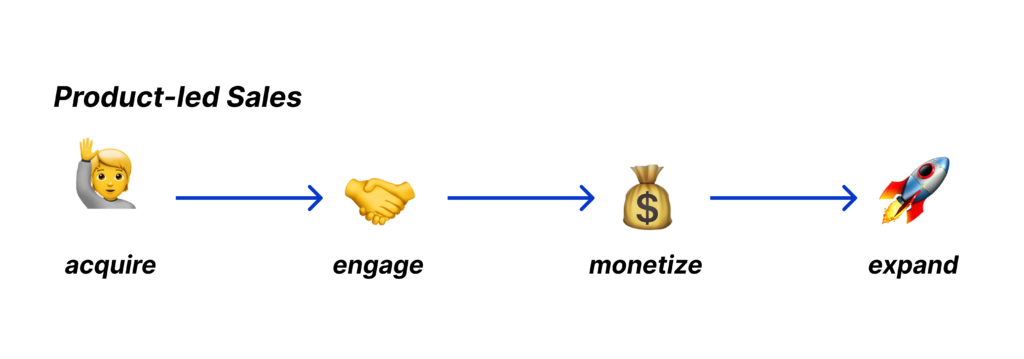
That leads your sales and growth team to create more time to focus on the actual problems of customers, understand growth opportunities, and push you to create the best product that the audience will ask for.
“No more paying before the product experience.”
Product-led sales leverage free trials, freemium models, and self-service features to allow customers to experience the product first-hand.
By employing this strategy, customers may come to understand the necessary value of the product before making a purchase decision. As a result, businesses can achieve higher conversion rates and lower churn rates. Also, it leverages education tools, onboarding experience, top-notch webinars, and events.
That leads customers to think that the people behind that product are experts in the area, increasing trust.
Pros
- Scalability: This strategy allows for easy scaling, as it primarily relies on product value and user recommendations rather than a large sales force.
- Cost-efficiency: By focusing the strategy around the product, businesses can significantly reduce their customer acquisition costs.
- Customer Loyalty: Products that truly solve customers’ problems engender strong brand loyalty, which often translates into higher lifetime customer values.
- Better Sales Cycles: A product-led sales strategy might have longer sales cycles, but it is stronger in converting prospects into customers, especially when offering a freemium business model or a free trial.
Cons
- Requires a High-Quality Product: A modest product won’t succeed with this strategy, as the entire concept revolves around the product’s superiority.
- Sales-Assistance: Without sales assistance, product-led sales in the enterprise segment may fall short, potentially missing out on larger revenue opportunities.
What is sales-led?
As the name suggests, this strategy emphasizes the role of the sales team in driving sales. It typically involves a targeted approach to customer acquisition, often with personalized sales pitches and high-touch engagement.

Sales-led is more common in industries with complex products or services that require detailed explanations or demonstrations. Companies like Oracle, Salesforce, and IBM are perfect examples of successful sales-led companies.
Pros
- Personalized Approach: Sales teams can tailor their pitches to individual clients, addressing specific needs or problems.
- Strong Relationships: Direct engagement with clients allows sales teams to build strong, personal relationships, leading to longer contracts and high customer retention rates.
Cons
- High Cost: Maintaining a large, skilled sales force is costly, and sales and marketing activities are also expensive.
- Limited Scalability: As your business grows, you’ll likely need to grow your sales team proportionally, which may limit scalability.
- Paying before getting product value: Users are no longer interested in paying before seeing and experiencing firsthand how they will benefit from the product.
- Longer sales cycles: The processes run by sales teams and the customer might take a lot of time.
- Higher probability of churn: Customers might not find what they expect; therefore, they might be closer to churn.
Product-led vs sales-led
Both sales-led and product-led strategies have their own strengths. The traditional sales-led approach relies heavily on the skills of a sales team to make the pitch and close deals. This works well in industries where relationships and custom solutions are important.
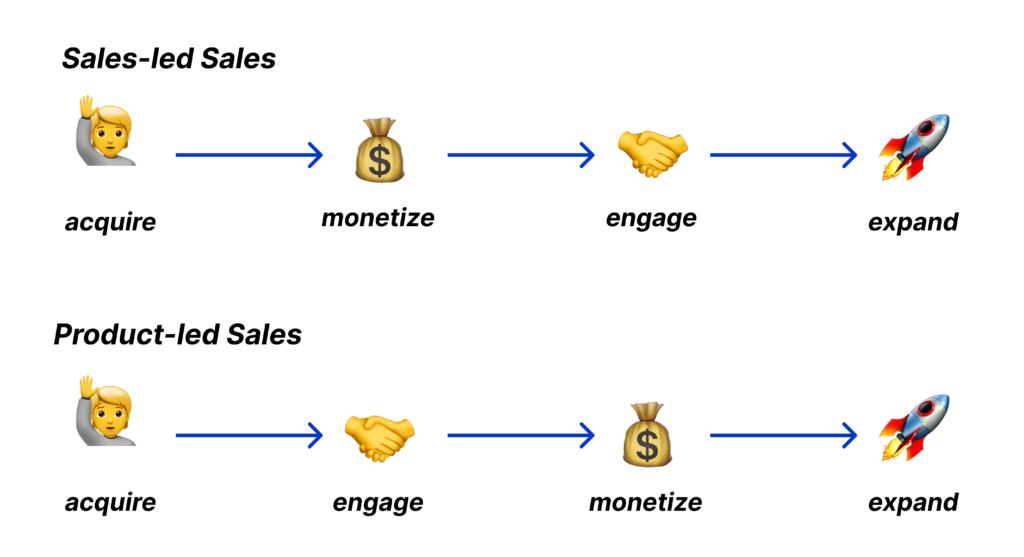
On the other hand, product-led sales rely on the product itself as the primary driver. The idea is to have a product so compelling that its value proposition and user experience lead to organic adoption.
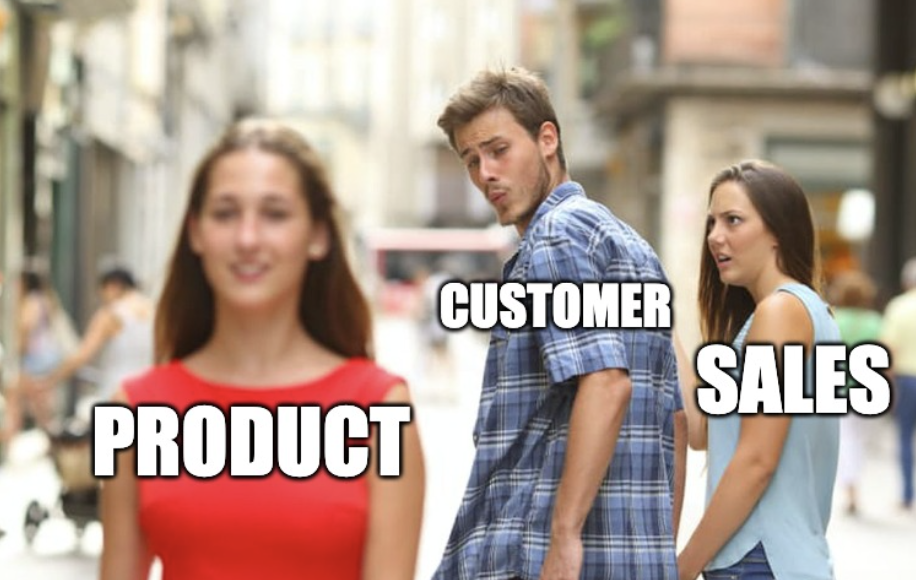
However, neither approach is a one-size-fits-all solution. You might not fit your business in one of these, but need them together…
We call this sales-assisted product-led sales.
Product-led and sales-assisted
We call this product-led and sales-assisted. It is basically product-led SALES.
The idea behind product-led sales with sales-assisted is to combine the best parts of both sales-led and product-led sales. Think of it as a synergy between the product and the sales team. The product brings in customers, and the sales team gives high-potential leads that extra push they need to buy.
In a typical product-led approach, a user might sign up for a software platform because it has great reviews, an easy-to-use interface, or was recommended by a peer. They will probably start with a free version or a trial to see how valuable the product is. As they learn more and use more advanced features, they may have questions, need help, or think about upgrading to a more powerful package.

This is where the part about sales help comes in. A salesperson might reach out to help, find out what the user’s specific needs are, and then make the product fit those needs. For enterprise-level clients or those who need complicated solutions, this personal touch can make the difference between a sale and a lost chance.
Think about using a platform for business analytics. A small business might start using the platform’s free version because its dashboard and basic tools for visualizing data are easy to use. As the company grows and its needs for data analytics get more complex, they might think about getting a premium package with more features.
This is when a salesperson steps in to show a demo of the premium features, answer questions, and maybe even offer custom solutions that are made to fit the needs of the company. The company joined because of the product at first, but the help with sales made sure they moved up to a higher revenue package.
How to transition from sales-led to product-led?
Transitioning from a sales-led to a product-led approach can be challenging. However, it requires a change in mindset and a willingness to shift the way things have been done in the past. To make the transition, you need to focus on the following:
- The user: To create a product that sells itself, you need to understand your users’ needs and pain points. You need to conduct user research to get insights into what your users or potential users want and require from your product.
- Embrace data: Use data to inform your decisions. It is crucial to analyze user behavior to understand how users are interacting with your product and where they may be getting into trouble.
- Build a strong product team: You need a strong product team to create a product-led sales approach. This team should be responsible for designing and developing a product that is so valuable and easy to use that it sells itself.
- Improve constantly: Once you have launched your product, continue to iterate and improve it based on user feedback. This will help you create a product that is truly user-focused and able to sell itself. User feedback is key to success when implementing a product-led growth strategy. Continuously gathering feedback can help you improve your product and make it more user-focused.
5 examples of product-led
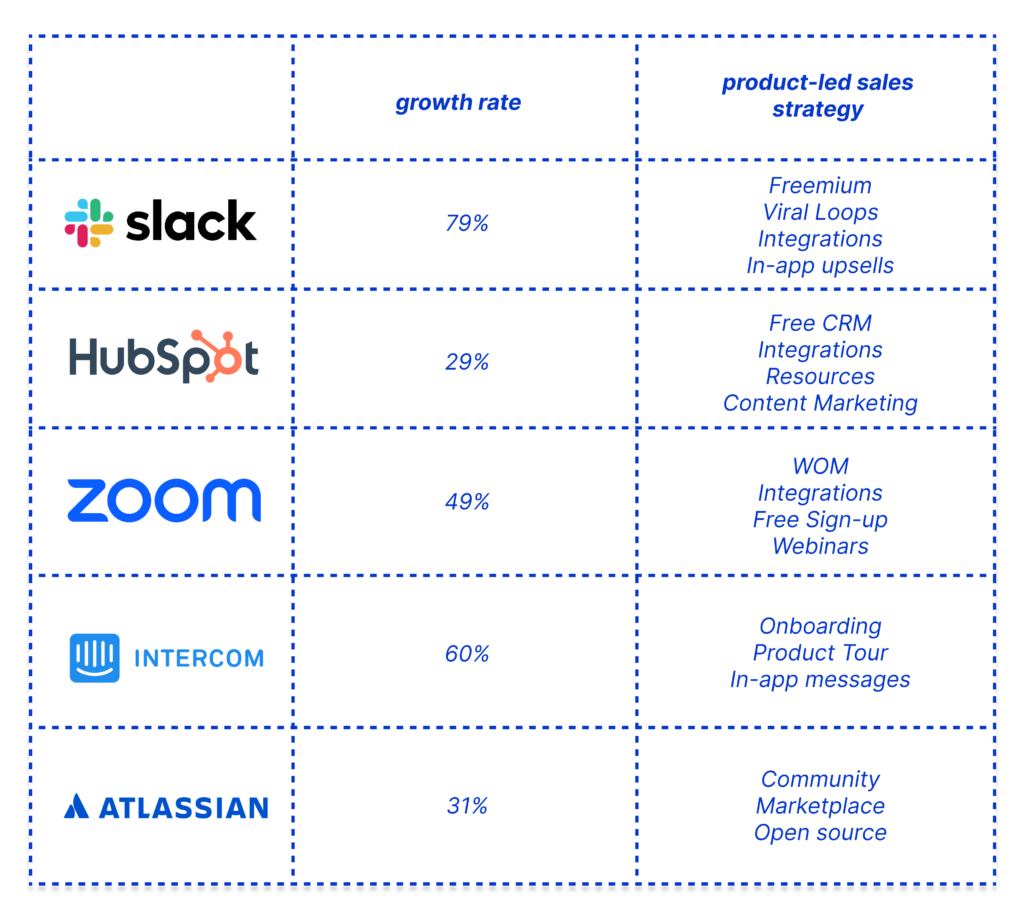
Nowadays, many successful companies focus on Product-led Sales. However, only a few are memorable to all of us. In this regard, we will examine six examples of companies that have achieved significant growth through a product-led approach:
1. Slack
Slack has grown to become one of the most successful communication platforms in the world, thanks in part to its product-led approach. Slack offers a free version of its product, which has helped to attract millions of users and convert many of them to paid subscribers.

And herein lies a clue to Secret sauce: Slack isn’t selling software because we are selling a positive user experience, says the CEO.
2. HubSpot
HubSpot is a leading provider of inbound marketing and sales software. HubSpot’s product-led approach has helped the company to attract and retain customers by providing a valuable product that meets the needs of its customers.
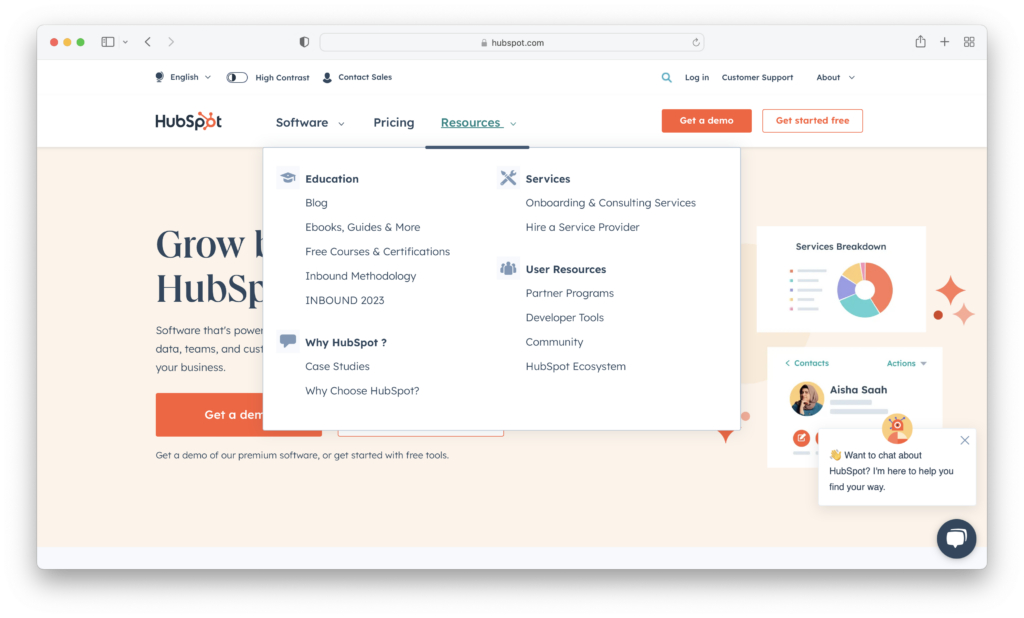
Also, they added free content and a free HubSpot Academy!
3. Zoom
Zoom is a video conferencing platform that has exploded in popularity in recent years. Zoom’s product-led approach has been a key factor in its success.
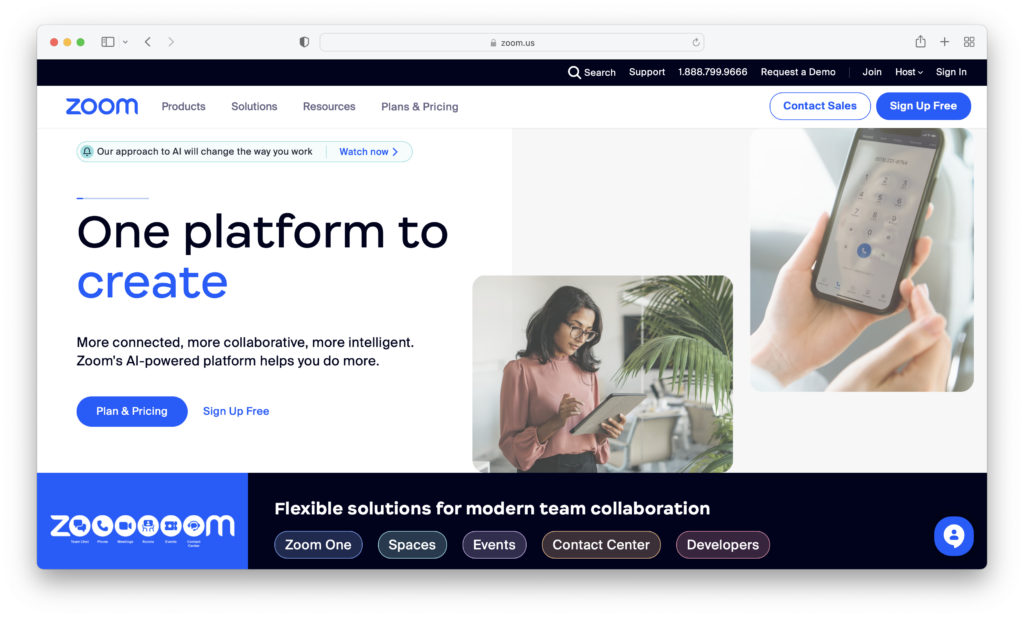
The company offers a free version of its product that has helped to attract millions of users. One can consider their word-of-mouth campaign as one of the best.
4. Intercom
Intercom is a customer messaging platform that has become popular in the SaaS industry.
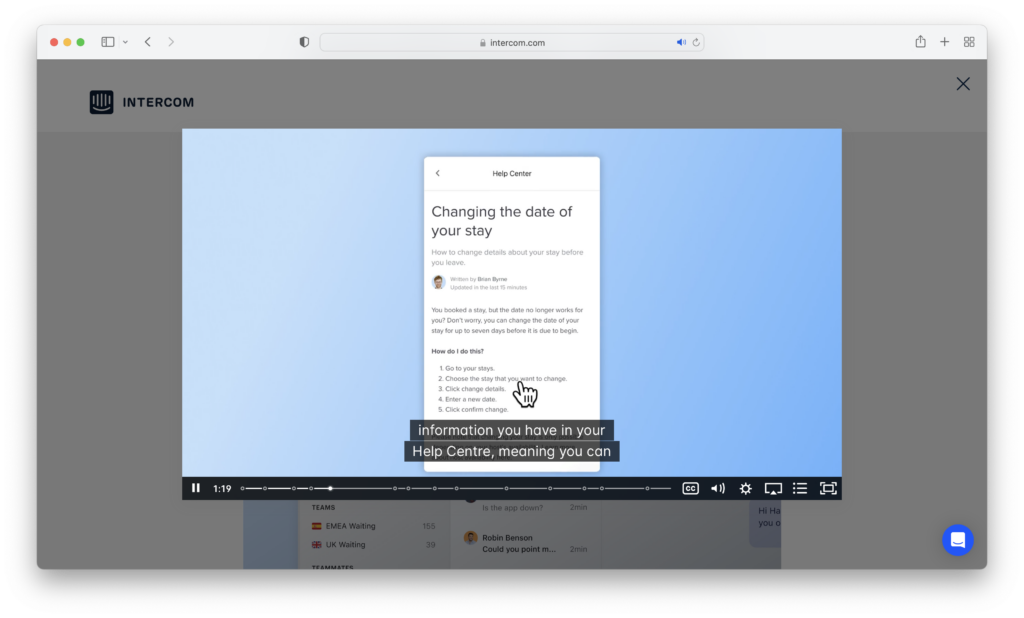
Intercom’s product-led approach, personalized onboarding, and product tours helped the company to attract and gain customers by providing a valuable product that meets the needs of its customers.
5. Atlassian
Atlassian’s focus on being a product that is easy to use has made it a popular choice for businesses of all sizes. Atlassian offers a range of collaboration tools, including Jira, Confluence, and Trello.
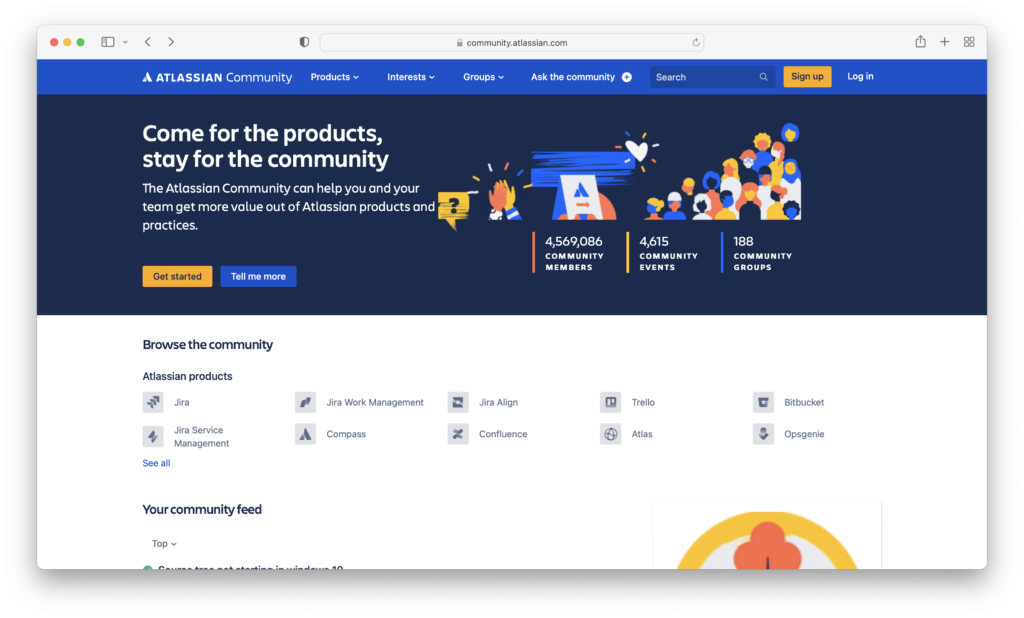
Moreover, they are the perfect example of creating a community as a brand. In 2020, Atlassian’s revenue reached $1.6 billion, highlighting the success of its product-led growth strategy.
Each of these companies has focused on creating a product that is so valuable that it sells itself. By doing so, they have achieved impressive growth and become leaders in their respective industries.
Conclusion
Finally, product-led sales is a new and innovative way of selling products that are gaining popularity in the business world. By focusing on the product itself as the primary driver of growth, you can deliver a great customer experience, increase user adoption, and, ultimately, increase revenue. If you’re looking to take your business to scale up, it may be the right time to transition.

